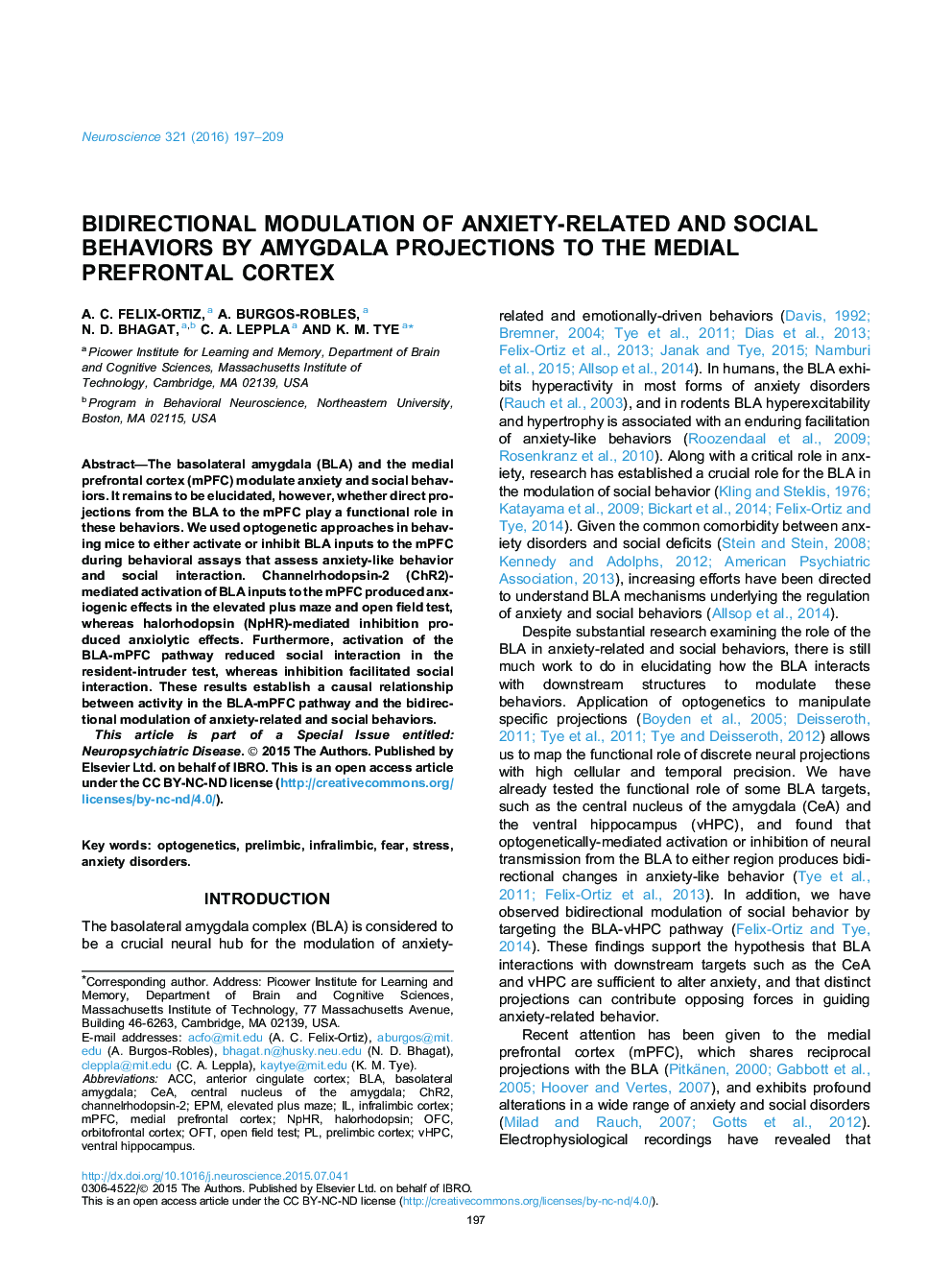| Article ID | Journal | Published Year | Pages | File Type |
|---|---|---|---|---|
| 6271168 | Neuroscience | 2016 | 13 Pages |
â¢BLA projections to the mPFC were targeted using optogenetic tools in mice.â¢Stimulation increased anxiety-like behavior and decreased social interaction.â¢Inhibition decreased anxiety-like behavior and increased social interaction.
The basolateral amygdala (BLA) and the medial prefrontal cortex (mPFC) modulate anxiety and social behaviors. It remains to be elucidated, however, whether direct projections from the BLA to the mPFC play a functional role in these behaviors. We used optogenetic approaches in behaving mice to either activate or inhibit BLA inputs to the mPFC during behavioral assays that assess anxiety-like behavior and social interaction. Channelrhodopsin-2 (ChR2)-mediated activation of BLA inputs to the mPFC produced anxiogenic effects in the elevated plus maze and open field test, whereas halorhodopsin (NpHR)-mediated inhibition produced anxiolytic effects. Furthermore, activation of the BLA-mPFC pathway reduced social interaction in the resident-intruder test, whereas inhibition facilitated social interaction. These results establish a causal relationship between activity in the BLA-mPFC pathway and the bidirectional modulation of anxiety-related and social behaviors.
